Stocks opened weak, got a pretty nice bounce and then turned lower to close weak. The major index ETFs were down around 1%. All sectors were down with the Energy SPDR (XLE) and Basic Materials SPDR (XLB) leading the way. Weakness in these two can be attributed to declines in oil and metals. Continued weakness in Asia and emerging markets is negative for metals and commodities. Note that some of the agricultural commodities bucked the trend and moved higher. The Wheat Fund (WEAT), the Corn Fund (CORN) and the Soybean Fund (SOYB) posted modest gains on the day. The charts below show the AD Line and AD Volume Line for the S&P 500. Note that the AD Volume Line failed at resistance and did not break out last week. The AD Line did break above its 1-June high, but this small breakout did not hold as the indicator turned sharply lower. This week's highs mark resistance for both. Also notice that the S&P 500 failed at broken support and 1650 marks short-term resistance.
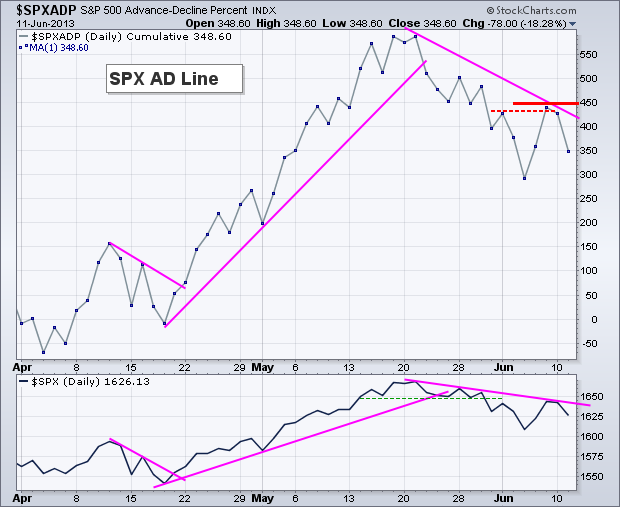

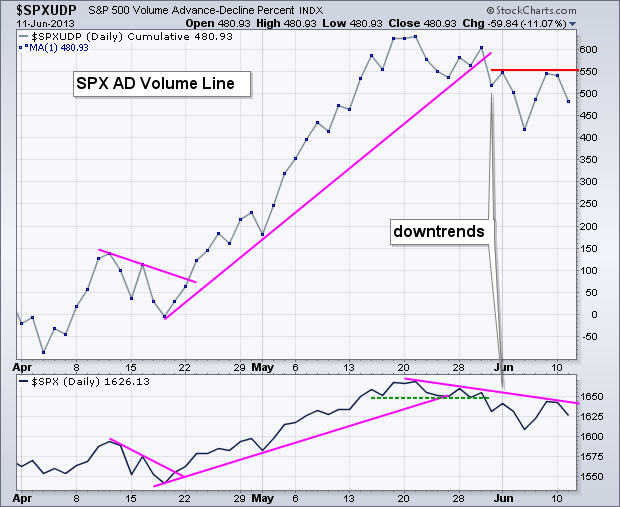

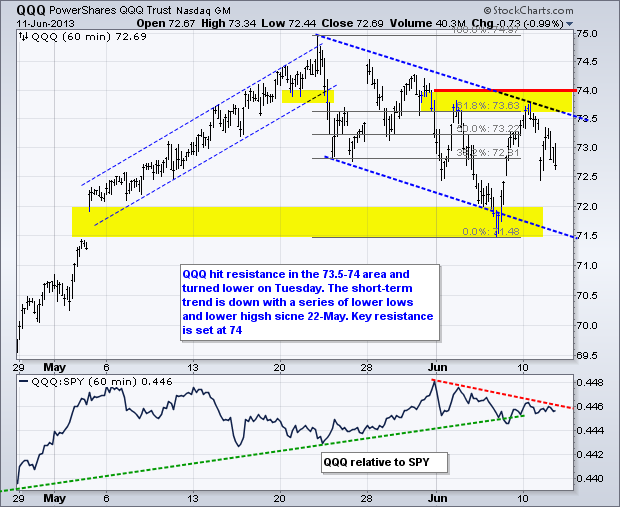
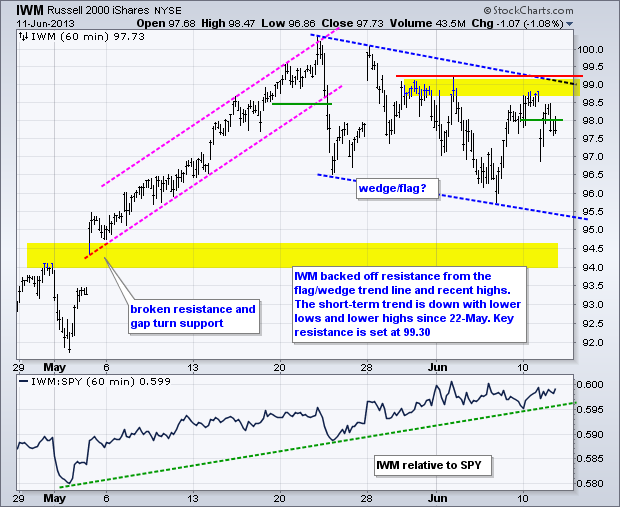
**************************************************************************
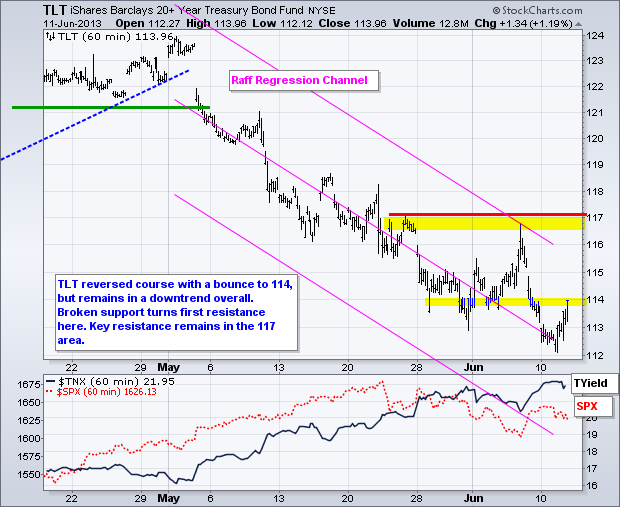
**************************************************************************

**************************************************************************
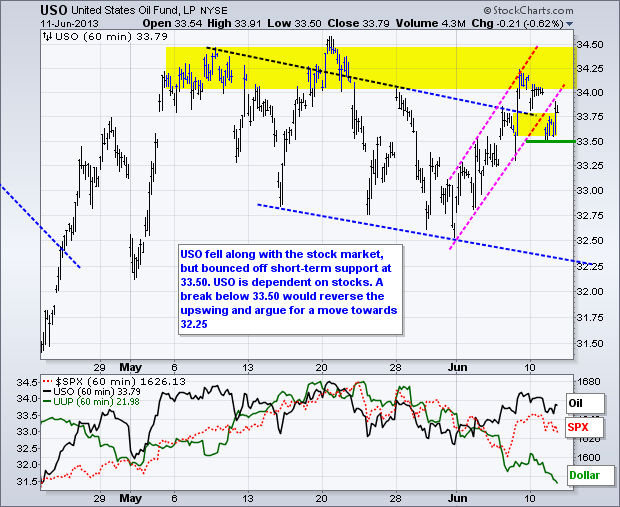
**************************************************************************
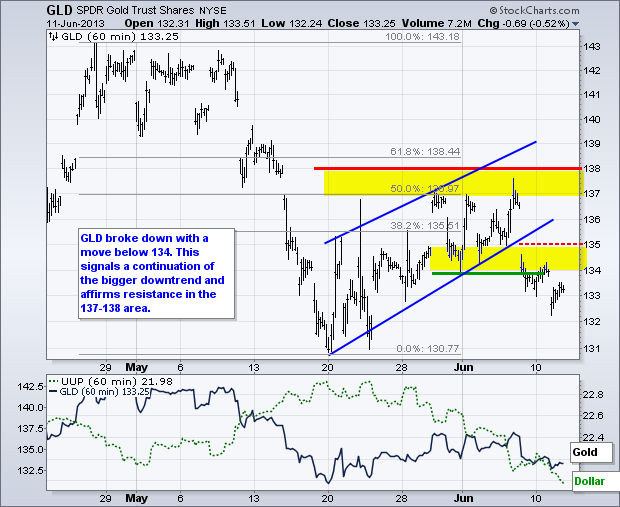
**************************************************************************
Key Reports and Events (all times Eastern):
Wed - Jun 12 - 07:00 - MBA Mortgage Index
Wed - Jun 12 - 10:30 - Oil Inventories
Thu - Jun 13 - 08:30 - Jobless Claims
Thu - Jun 13 - 08:30 - Retail Sales
Thu - Jun 13 - 10:00 - Business Inventories
Thu - Jun 13 - 10:30 - Natural Gas Inventories
Fri - Jun 14 - 08:30 - Producer Price Index (PPI)
Fri - Jun 14 - 09:15 - Industrial Production
Fri - Jun 14 - 09:55 - Michigan Sentiment
Charts of Interest: Tuesday and Thursday
This commentary and charts-of-interest are designed to stimulate thinking. This analysis is
not a recommendation to buy, sell, hold or sell short any security (stock ETF or otherwise).
We all need to think for ourselves when it comes to trading our own accounts. First, it is
the only way to really learn. Second, we are the only ones responsible for our decisions.
Think of these charts as food for further analysis. Before making a trade, it is important
to have a plan. Plan the trade and trade the plan. Among other things, this includes setting
a trigger level, a target area and a stop-loss level. It is also important to plan for three
possible price movements: advance, decline or sideways. Have a plan for all three scenarios
BEFORE making the trade. Consider possible holding times. And finally, look at overall market
conditions and sector/industry performance.

About the author:
Arthur Hill, CMT, is the Chief Technical Strategist at TrendInvestorPro.com. Focusing predominantly on US equities and ETFs, his systematic approach of identifying trend, finding signals within the trend, and setting key price levels has made him an esteemed market technician. Arthur has written articles for numerous financial publications including Barrons and Stocks & Commodities Magazine. In addition to his Chartered Market Technician (CMT) designation, he holds an MBA from the Cass Business School at City University in London.
Learn More





